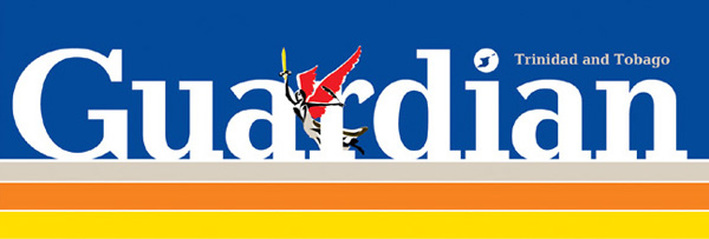Archaeologists like Dr Basil Reid at UWI describe evidence that suggests Trinidad was settled by around 7,000 years ago. These first peoples are described as “Archaic” or “Ortoiroids.” They were hunter-gatherers who survived by hunting, fishing and shell collecting. With tools made from stone, shells, bone and wood.
Discovered in 1969, “Banwari Man” is evidence of settlement in Trinidad and carbon-dates to about 5,500 years ago. Interestingly Reid notes that Banwari Man was more likely a woman.
Trinidad, of course, is visible from South America. Thanks to both a land bridge once connecting us to the continent (during the last ice age, when sea levels were much lower) and a dense web of sea channels and rivers south of Trinidad navigable by canoe, we have always been easy to reach. Over millennia our island became an important hub for the movement of various different Amerindian groups between islands in the Caribbean and the continental mainland.
Around 2,000 years ago, the evidence suggests, new types of people, over a long period of time, arrived here. They were distinct from the archaic peoples and are described as pottery-making cassava horticulturalists. Horticulture means gardens and cultivating foods. It transforms nomadic life. Groups became more sedentary and larger as they grew a variety of foods around where they lived.
The umbrella term for these new peoples is the Saladoid. Many sites of Saladoid villages have been found around Trinidad and suggest the Saladoid consisted of multiple ethnic groups with a certain level of autonomy rather than being a singular culture. The Marianne Estate in Blanchisseuse is generally considered to have been one of the largest Saladoid sites, with evidence suggesting it was once a village community built around a central plaza. It’s easy to imagine why.
The “Saladoid,” like other umbrella terms for later Amerindians, refers to a particular ceramic tradition, and the Saladoid are recognised for their thin, well-fired pottery style with its symbolic motifs depicting animistic religion. Eventually the Saladoid appear to have been encroached by, and interacted with, a new group of peoples described under the umbrella term Barrancoid. Saladoid sites like that found in Erin Bay provide evidence of interaction between these groups.
From around 1,200 years ago to a few centuries before Columbus, evidence points to expansion along the Orinoco by a new group collected under the name Arauquinoid. Elements of this population probably moved downriver to the coast before crossing to settle first in Icacos and Guayaguayare, then dispersing both across and off the island.
Over the next few centuries the Arauquinoid presence intensified and local exchanges and communication lines between the mainland and other islands were established, developing the complexity and interconnection of Amerindian society across the region.
These exchange and communication networks allowed the consolidation of independent local village polities across the Lesser Antilles, including Trinidad, and populations grew again. This growth in population implies stability, peaceful cohabitation and adaptation between local groups. Long before modern Trinidad was multicultural, the first peoples of the island probably already were.
In this period shortly before Columbus, local groups related to one of three linguistic families—Arawakan, Cariban and Waraoan—and formed part of large regional island-to-island and island-to-mainland trading networks. We know, for example, that the Warao of Venezuela were frequent visitors.
On arrival to Iere, Columbus met a far more diverse society than history traditionally imagines. The label “Caribs” is an umbrella term used for the many different tribes he encountered and whose names included Carinepagoto, Chaguanes, Yaio, Shebaio, Lokono and Nepoio. Some estimate that at the time of European “contact,” Trinidad had 35,000 inhabitants living in communities across the island.
This brief tour of early Amerindian history leaves out a lot. Yet it contains enough to recognise that the story Columbus sold of just two groups—cannibals and noble peace-loving farmers—was a lie. His story was a colonial narrative to justify genocide, slavery and the forced conversion of multiple groups and cultures.
Sadly, for a long time it also prevented us from seeing the Amerindian survivals and adaptations all around us in Trinidad and Tobago. Thankfully “his-story” is being rewritten.
http://guardian.co.tt/columnist/2012-10-08/tt-multi-cultural-long-ago

 RSS Feed
RSS Feed